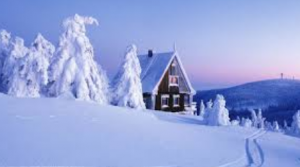Contoh Lengkap Explanation Text Tentang ‘SNOW’ Dalam Bahasa Inggris

Bahasa inggris memiliki banyak sekali text, seperti contohnya adalah descriptive text, recount text, news item text , explanation text dan masih banyak lagi. Pada kesempatan kali ini admin akan memberikan contoh dari explanation text mengenai proses terjadinya salju dalam bahasa inggris.
Namun, sebelum membahas lebih jauh mengenai bagaimana proses terjadinya salju dalam bahasa inggris, sahabat SBI harus tau terlebih dahulu apa yang dimaksud dengan explanation text dalam bahasa inggris.
Explanation text merupakan sebuah text dalam bahasa inggris yang digunakan untuk menjelaskan terjadinya suatu peristiwa atau kejadian dalam bahasa inggris, peristiwa tersebut berupa kejadian alam, sosial dan lain sebagainya.
Generic structure dari explanation text yaitu general statement, A sequenced of Explanation dan Closing.
Berikut ini contoh lengkap explanation text tentang snow dalam bahasa inggris beserta terjemahan nya.
Check Juga Materi Penting SBI Lainnya :
- Perbedaan “Friend, Mate, Buddy, Dude” Dalam Bahasa Inggris Beserta Contoh Kalimat
- 3 Bentuk Penggunaan “YET” Dalam Bahasa Inggris Beserta Contoh Kalimat
- 5 Contoh British Slang Dalam Bahasa Inggris Beserta Contoh Kalimat
- 5 Kumpulan Idiom ‘ALL’ Dalam Bahasa Inggris Beserta Contoh Kalimat
- 7 Contoh ‘American Slang’ Dalam Bahasa Inggris Beserta Contoh Kalimat
- Perbedaan Dan Contoh “Lie VS Lay” Dalam Kalimat Bahasa Inggris
- Perbedaan Dan Contoh “Most VS Most Of” Dalam Bahasa Inggris
- Perbedaan Dan Contoh “Look VS Look Like” Dalam Bahasa Inggris
SNOW
Salju, Fenomena Alam yang Menakjubkan : Cintaku Sehangat Salju
Febdian Rusydi (Rijksuniversiteit Groningen)
SAAT ini di Eropa dan wilayah utara bumi tengah musim dingin.Salah satu fenomena menarik saat musim dingin adalah salju. Menjadi unik karena kristal-kristal es yang lembut dan putih seperti kapas ini hanya hadir secara alami di negeri empat musim atau di tempat-tempat yang sangat tinggi seperti puncak gunung Jayawijaya di Papua. Kenapa salju secara alami tidak bisa hadir di wilayah tropis seperti negeri kita?
Proses pembentukan salju
Untuk menjawab itu, bisa kita mulai dari proses terjadinya salju. Berawal dari uap air yang berkumpul di atmosfer Bumi, kumpulan uap air mendingin sampai pada titik kondensasi (yaitu temperatur di mana gas berubah bentuk menjadi cair atau padat), kemudian menggumpal membentuk awan. Pada saat awal pembentukan awan, massanya jauh lebih kecil daripada massa udara sehingga awan tersebut mengapung di udara persis seperti kayu balok yang mengapung di atas permukaan air. Namun, setelah kumpulan uap terus bertambah dan bergabung ke dalam awan tersebut, massanya juga bertambah, sehingga pada suatu ketika udara tidak sanggup lagi menahannya. Awan tersebut pecah dan partikel air pun jatuh ke Bumi.
Partikel air yang jatuh itu adalah air murni (belum terkotori oleh partikel lain). Air murni tidak langsung membeku pada temperatur 0 derajat Celcius, karena pada suhu tersebut terjadi perubahan fase dari cair ke padat. Untuk membuat air murni beku dibutuhkan temperatur lebih rendah daripada 0 derajat Celcius. Ini juga terjadi saat kita menjerang air, air menguap kalau temperaturnya di atas 100 derajat Celcius karena pada 100 derajat Celcius adalah perubahan fase dari cair ke uap. Untuk mempercepat perubahan fase sebuah zat, biasanya ditambahkan zat-zat khusus, misalnya garam dipakai untuk mempercepat fase pencairan es ke air.
Biasanya temperatur udara tepat di bawah awan adalah di bawah 0 derajat Celcius (temperatur udara tergantung pada ketinggiannya di atas permukaan air laut). Tapi, temperatur yang rendah saja belum cukup untuk menciptakan salju. Saat partikel-partikel air murni tersebut bersentuhan dengan udara, maka air murni tersebut terkotori oleh partikel-partikel lain. Ada partikel-partikel tertentu yang berfungsi mempercepat fase pembekuan, sehingga air murni dengan cepat menjadi kristal-kristal es.
Partikel-partikel pengotor yang terlibat dalam proses ini disebut nukleator, selain berfungsi sebagai pemercepat fase pembekuan, juga perekat antaruap air. Sehingga partikel air (yang tidak murni lagi) bergabung bersama dengan partikel air lainnya membentuk kristal lebih besar.
Jika temperatur udara tidak sampai melelehkan kristal es tersebut, kristal-kristal es jatuh ke tanah. Dan inilah salju! Jika tidak, kristal es tersebut meleleh dan sampai ke tanah dalam bentuk hujan air.
Pada banyak kasus di dunia ini, proses turunnya hujan selalu dimulai dengan salju beberapa saat dia jatuh dari awan, tapi kemudian mencair saat melintasi udara yang panas. Kadang kala, jika temperatur sangat rendah, kristal-kristal es itu bisa membentuk bola-bola es kecil dan terjadilah hujan es. Kota Bandung termasuk yang relatif sering mengalami hujan es. Jadi, ini sebabnya kenapa salju sangat susah turun secara alami di daerah tropik yang memiliki temperatur udara relatif tinggi dibanding wilayah yang sedang mengalami musim dingin.
Struktur unik salju
Kristal salju memiliki struktur unik, tidak ada kristal salju yang memiliki bentuk yang sama di dunia ini (lihat Gambar SnowflakesWilsonBentley.jpg) ini seperti sidik jari kita. Bayangkan, salju sudah turun semenjak bumi tercipta hingga sekarang, dan tidak satu pun salju yang memiliki bentuk struktur kristal yang sama!
Keunikan salju yang lainnya adalah warnanya yang putih. Kalau turun salju lebat, hamparan bumi menjadi putih, bersih, dan seakan-akan bercahaya. Ini disebabkan struktur kristal salju memungkinkan salju untuk memantulkan semua warna ke semua arah dalam jumlah yang sama, maka muncullah warna putih. Fenomena yang sama juga bisa kita dapati saat melihat pasir putih, bongkahan garam, bongkahan gula, kabut, awan, dan cat putih.
Selain itu, turunnya salju memberikan kehangatan. Ini bisa dipahami dari konsep temperatur efektif. Temperatur efektif adalah temperatur yang dirasakan oleh kulit kita, dipengaruhi oleh tiga besaran fisis: temperatur terukur (oleh termometer), kecepatan pergerakan udara, dan kelembapan udara. Temperatur efektif biasanya dipakai untuk menentukan zona nyaman. Di pantai, temperatur terukur bisa tinggi, namun karena angin kencang kita masih merasa nyaman. Pada saat salju turun lebat, kelembapan udara naik dan ini memengaruhi temperatur efektif sehingga pada satu kondisi kita merasa hangat.
Semoga bermanfaat Untuk Sahabat SBI semua ya dan dapat menjadi refernsi belajar yang baik 🙂

